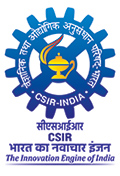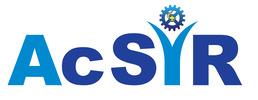Development of quenched and tempered steel for wear resistance applications
Objectives
- To design a low alloy steel for wear resistance applications
- To achieve hardness, yield strength and elongation of 450 BHN, 1100 MPa (min.) and 10%, respectively
- To develop a process schedule for quenching and tempering process
Technical Details
The wear of materials has become one of the major challenges for the mining industries as well as the manufacturers of machineries used for the mining and earthmoving operations. This is also a significant problem in terms of economics, as wear losses lead to a large fraction of national gross domestic product. Therefore, better materials with good endurance in wear environment can offer an opportunity for increasing the efficiency as well as decreasing materials usage. The development of newer wear resistant material having better properties, in terms of weldability, bendability, corrosion resistance and mechanical properties may lead to less expensive materials that can be easily installed and repaired in the field. A systematic study was done to design the alloy using commercially available Thermo-Calc software so as to reach a suitable composition. Steel was made in-house using a vacuum induction furnace at a 40 kg scale. Dilatometry studies indicated the required cooling rate for the formation of a fully martensitic structure, signifying the possibility of achieving the desired microstructure on run-out table. The quenched steel samples were tempered at different temperatures and for various durations; followed by microstructural characterization, mechanical property evaluation (hardness, strength, elongation and low temperature toughness at -40 oC) and wear behaviour estimation.
Achievement (Output/outcome)
Low alloy wear resistant steel, with CEV in the range of 0.47-0.50, were developed that showed the values of UTS>1400 MPa, YS>1200 MPa, elongation≥10% and hardness in the range of 440-450 BHN. These properties are achieved mostly for low temperature tempering for a duration of 1-3 h. It was found that a cooling rate of 50-60 oC/s on the run-out table is optimum for achieving a fully martensitic structure. The charpy impact toughness of steel was found to be around 27 J at -40 oC. The process can further be modified to achieve better strength and toughness by further grain refinement during hot rolling stage. The wear volume loss for both the alloys remained in the range of 210-230 mm3 , as per the ASTM G65 standard test. In general, a low temperature tempering treatment does give better abrasion resistance.
Impact
The designed steel and the process developed thereof does give abrasion resistance comparable to the already existing abrasion resistant steel. However, the carbon equivalent in the present case is lower in comparison of the available data on commercial grade abrasion resistant steels, particularly for 20 mm thick plate.
 |  |







